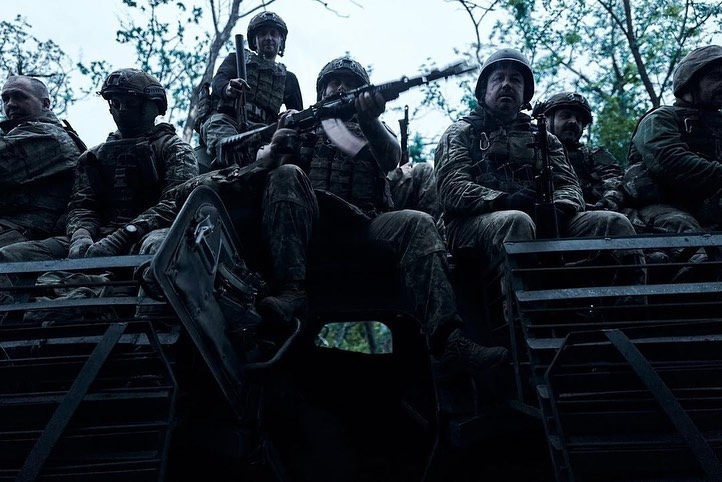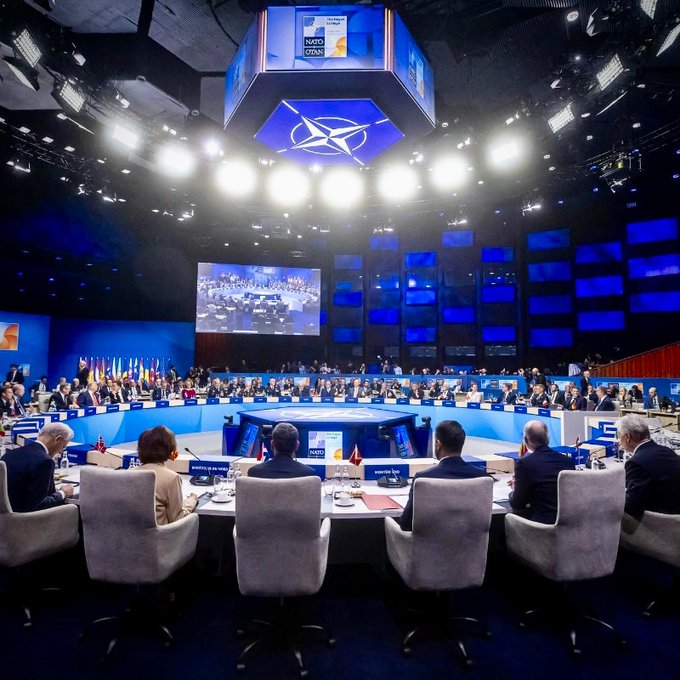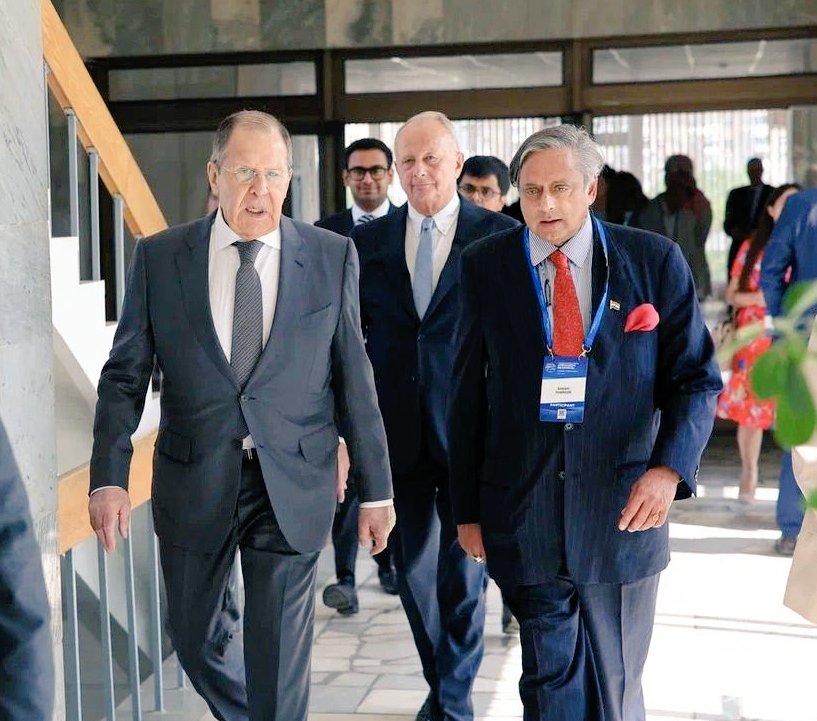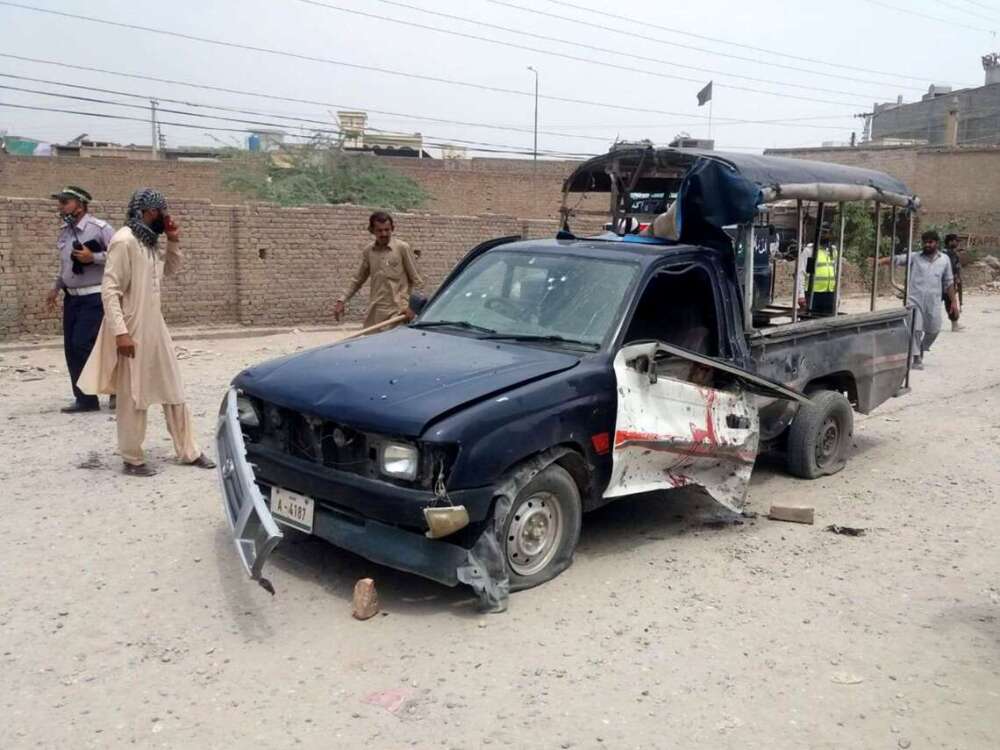A government official said that elevated levels of radiation were detected near the site of the plant, which provides about 25 percent of Ukraine’s power generation, reports Asian Lite News
Russian forces shelled Europe’s largest nuclear plant early Friday in the battle for control of a crucial energy-producing city, and the power station was on fire.
Plant spokesman Andriy Tuz told Ukrainian television that shells were falling directly on the Zaporizhzhia plant and had set fire to one of the facility’s six reactors. That reactor is under renovation and not operating, but there is nuclear fuel inside, he said.
Firefighters cannot get near the fire because they are being shot at, Tuz said.
A government official said that elevated levels of radiation were detected near the site of the plant, which provides about 25 percent of Ukraine’s power generation. The official spoke on condition of anonymity because the information has not yet been publicly released.
Tuz said it is urgent to stop the fighting to put out the flames.
The fighting at Enerhodar, a city on the Dnieper River, came as another round of talks between the two sides yielded a tentative agreement to set up safe corridors inside Ukraine to evacuate citizens and deliver humanitarian aid.
Elsewhere, Russian forces gained ground in their bid to cut off the country from the sea, as Ukrainian leaders called on citizens to rise up and wage guerrilla war against the invaders.
While the huge Russian armored column threatening Kyiv appeared bogged down outside the capital, Vladimir Putin’s forces have brought their superior firepower to bear over the past few days, launching hundreds of missiles and artillery attacks on cities and other sites around the country and making significant gains in the south.
The mayor of Enerhodar said Ukrainian forces were battling Russian troops on the city’s outskirts. Video showed flames and black smoke rising above the city of more than 50,000, with people streaming past wrecked cars, just a day after the UN atomic watchdog agency expressed grave concern that the fighting could cause accidental damage to Ukraine’s 15 nuclear reactors.
Mayor Dmytro Orlov and the Ukrainian state atomic energy company reported that a Russian military column was heading toward the nuclear plant. Loud shots and rocket fire were heard late Thursday.
“Many young men in athletic clothes and armed with Kalashnikovs have come into the city. They are breaking down doors and trying to get into the apartments of local residents,” the statement from Energoatom said.
Ukrainian Prime Minister Denys Shmyhal called on the West to close the skies over the country’s nuclear plants as fighting intensified. “It is a question of the security of the whole world!” he said in a statement.
The US and NATO allies have ruled out creating a no-fly zone since the move would pit Russian and Western military forces against each other.
The Russians announced the capture of the southern city of Kherson, a vital Black Sea port of 280,000, and local Ukrainian officials confirmed the takeover of the government headquarters there, making it the first major city to fall since the invasion began a week ago.
Heavy fighting continued on the outskirts of another strategic port, Mariupol, on the Azov Sea. The battles have knocked out the city’s electricity, heat and water systems, as well as most phone service, officials said. Food deliveries to the city were also cut.
Associated Press video from the port city shows the assault lighting up the darkening sky above largely deserted streets and medical teams treating civilians, including one inside a clinic who appeared to be a child. Doctors were unable to save the person.
Severing Ukraine’s access to the Black and Azov seas would deal a crippling blow to its economy and allow Russia to build a land corridor to Crimea, seized by Moscow in 2014.
Overall, the outnumbered, outgunned Ukrainians have put up stiff resistance, staving off the swift victory that Russia appeared to have expected. But a senior US defense official, speaking on condition of anonymity, said Russia’s seizure of Crimea gave it a logistical advantage in that part of the country, with shorter supply lines that smoothed the offensive there.
Ukrainian leaders called on the people to defend their homeland by cutting down trees, erecting barricades in the cities and attacking enemy columns from the rear. In recent days, authorities have issued weapons to civilians and taught them how to make Molotov cocktails.
“Total resistance. … This is our Ukrainian trump card, and this is what we can do best in the world,” Oleksiy Arestovich, an aide to Ukrainian President Volodymyr Zelenskyy, said in a video message, recalling guerrilla actions in Nazi-occupied Ukraine during World War II.
In a video address to the nation, Zelenskyy praised his country’s resistance.
The Russians “will have no peace here. They will have no food,” he said. “They will have not one quiet moment.”
The second round of talks between Ukrainian and Russian delegations was held in neighboring Belarus. But the two sides appeared far apart going into the meeting, and Putin warned Ukraine that it must quickly accept the Kremlin’s demand for its “demilitarization” and declare itself neutral, renouncing its bid to join NATO.
Putin told French President Emmanuel Macron he was determined to press on with his attack “until the end,” according to Macron’s office.
The two sides said that they tentatively agreed to allow cease-fires in areas designated safe corridors, and that they would seek to work out the necessary details quickly. A Zelenskyy adviser also said a third round of talks will be held early next week.
Despite a profusion of evidence of civilian casualties and destruction of property by the Russian military, Putin decried what he called an “anti-Russian disinformation campaign” and insisted that Moscow uses “only precision weapons to exclusively destroy military infrastructure.”
Putin claimed that the Russian military had already offered safe corridors for civilians to flee, but he asserted without evidence that Ukrainian “neo-Nazis” were preventing people from leaving and were using them as human shields.














